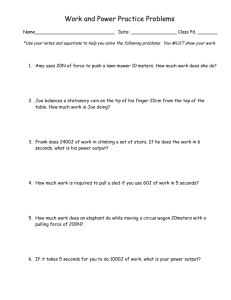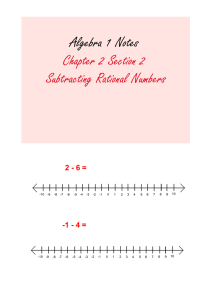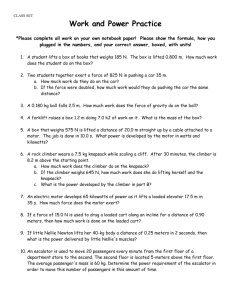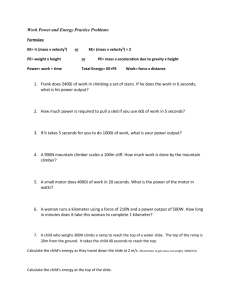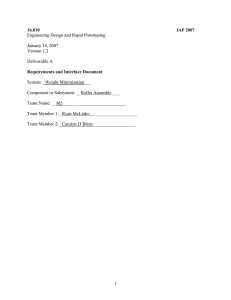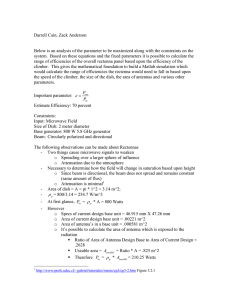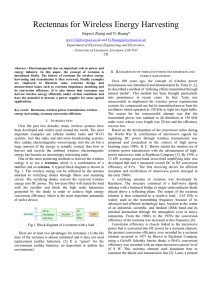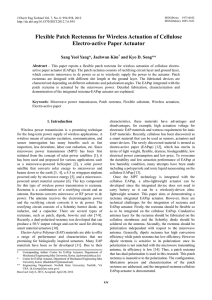M2 Team WERMS (WE Rectify Microwave Signals) Zack Anderson
advertisement
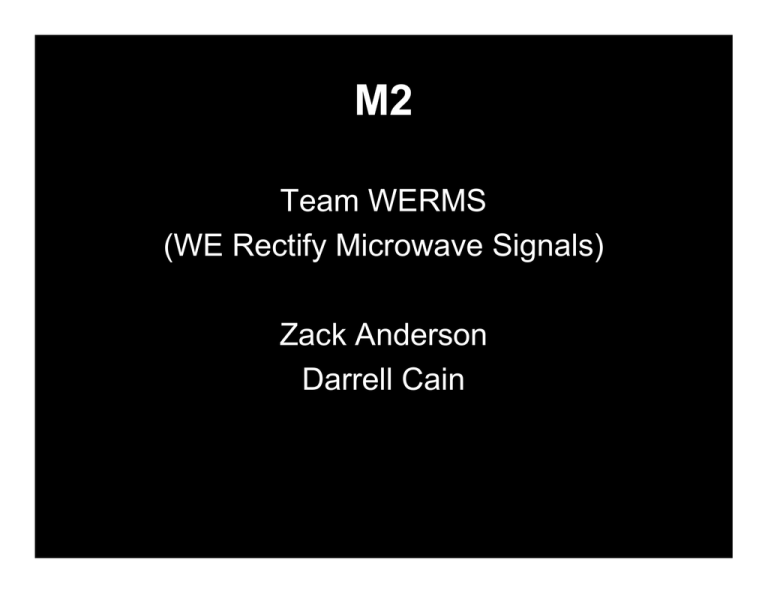
M2 Team WERMS (WE Rectify Microwave Signals) Zack Anderson Darrell Cain Motivation Why Microwave? • Efficient method of transmitting large amounts of energy • Small wavelength = higher energy • Passes easily through the atmosphere Uses • • • • Orbiting solar “power plant” satellites Aircrafts Transportation (“Space Elevator”) Basically anywhere large power sources are not feasible to store, a tether is near impossible, and a high energy demand exists Requirements • Provide enough power to the climber over 50 seconds to meet the following requirements from it’s capacitor array – 24 V – 400 W – 16.7 amps • Properly shield the rest of the climber from the microwave source Parameters • Must optimize for efficiency Power Out/Power In Constraints -Size of Beam -Speed of climber -Amount of capacitor energy -Efficiency of Climber t 0 ≤ ∫ ( Pout − Wclimber / ε climber )dt ≤ 1 mgross hclimb g 4 0 t 0 ≤ ∫ ( ρ μ ruse / nonuse Apanel ε rect − 1 mgross v 2 / ε climber )dt ≤ 1 mgross hclimb g 2 4 0 Arriving At An Answer “Rectapenna” MILAX (Canada) Texas A&M University Rectenna • Research into microwave power transmission started after WWII • NASA got involved in the 70s and 80s • Currently mostly space-based applications are being explored Performance Estimate Key Elements of Current Design t 0 ≤ ∫ ( Pout − Wclimber / ε climber )dt ≤ 1 mgross hclimb g 4 0 t 0 ≤ ∫ ( ρ μ ruse / nonuse Apanel ε rect − 1 mgross v 2 / ε climber )dt ≤ 1 mgross hclimb g 2 4 0 1 m h g = 6125 J 4 gross climb ρ μ = 254.7 W/m2 Apanel = 3.14 m2 v = 2m / s ruse / nonuse = .2628 This leaves only two variables, efficiency of climber and efficiency of rectenna • Possible to now generate a bounding constraint on the efficiencies upper lower Analysis • Beam density estimation is both low and idealized • Ratio is extremely low Manufacturing Cost Estimate Future Work to be done – Create a simulation of the equations mentioned above so as to accurately reflect the efficiencies envelope with various changes – Change the rectenna design so it captures more area of the beam per square foot of the rectenna panel – Do an actual build and test of the equipment, then tweak the tradeoff between efficiency and area of antenna till it’s optimal Lessons Learned • Variable optimization can be subtle • Sometimes the fine tuned answer is not necessarily the best answer • The best way to get results, is to perform tests • Have very well defined goals that serve the long term
